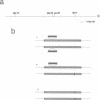Abstract
Mutations caused by the Tc1 transposon in Caenorhabditis elegans can revert by loss of the element. Usually the transposon leaves behind a 'footprint'--a few nucleotides of one or both ends of the transposon. Two possible explanations for the footprints are: (i) imprecise excision or (ii) interrupted repair. Here I report that in a diploid animal having a homozygous Tc1 insertion the reversion frequency is approximately 10(-4), and a Tc1 footprint is found; however when the corresponding sequence on the homologous chromosome is wild-type, the reversion frequency is 100 times higher, and the reverted sequence is precise. Apparently the footprint results from incomplete gene conversion from the homologous chromosome, and not from imprecise excision of Tc1. These results support the following model: Tc1 excision leaves a double-strand DNA break, which can be repaired using the homologous chromosome or sister chromatid as a template. In heterozygotes repair can lead to reversion; in homozygotes Tc1 is copied into the 'empty' site, and only rare interrupted repair leads to reversion, hence the 100-fold lower reversion rate and the footprint.
Full text
PDF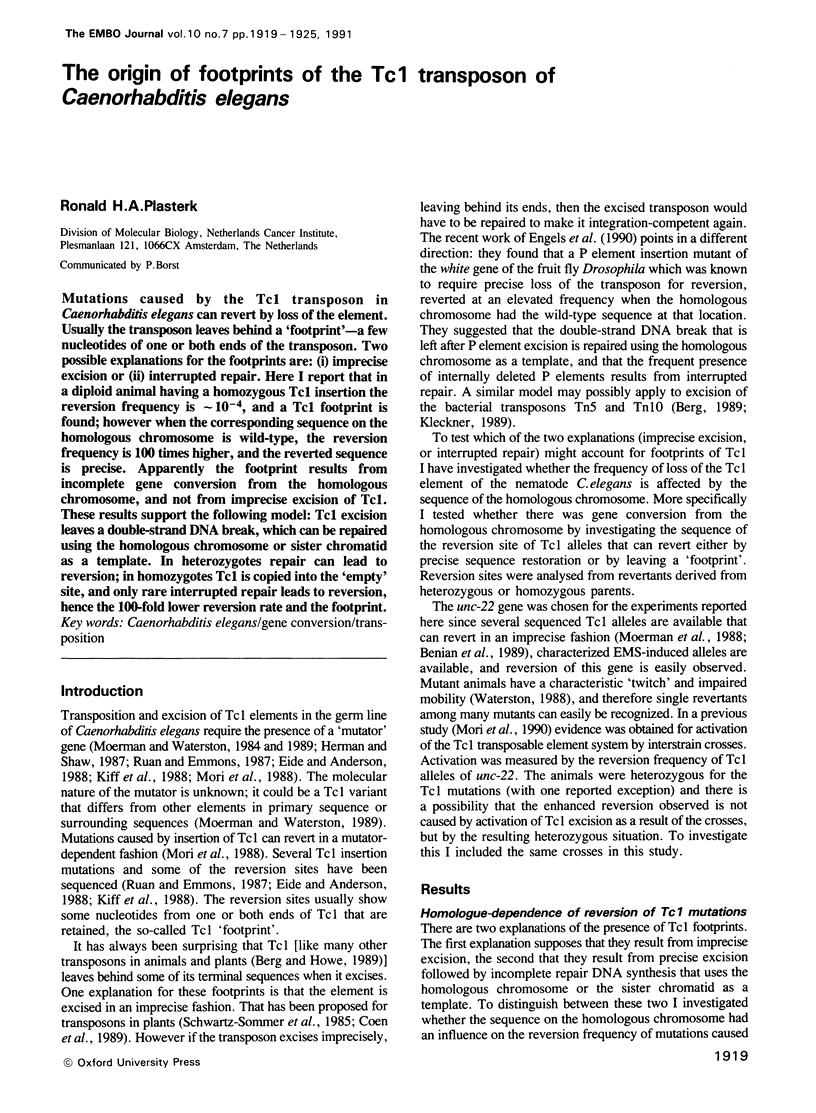
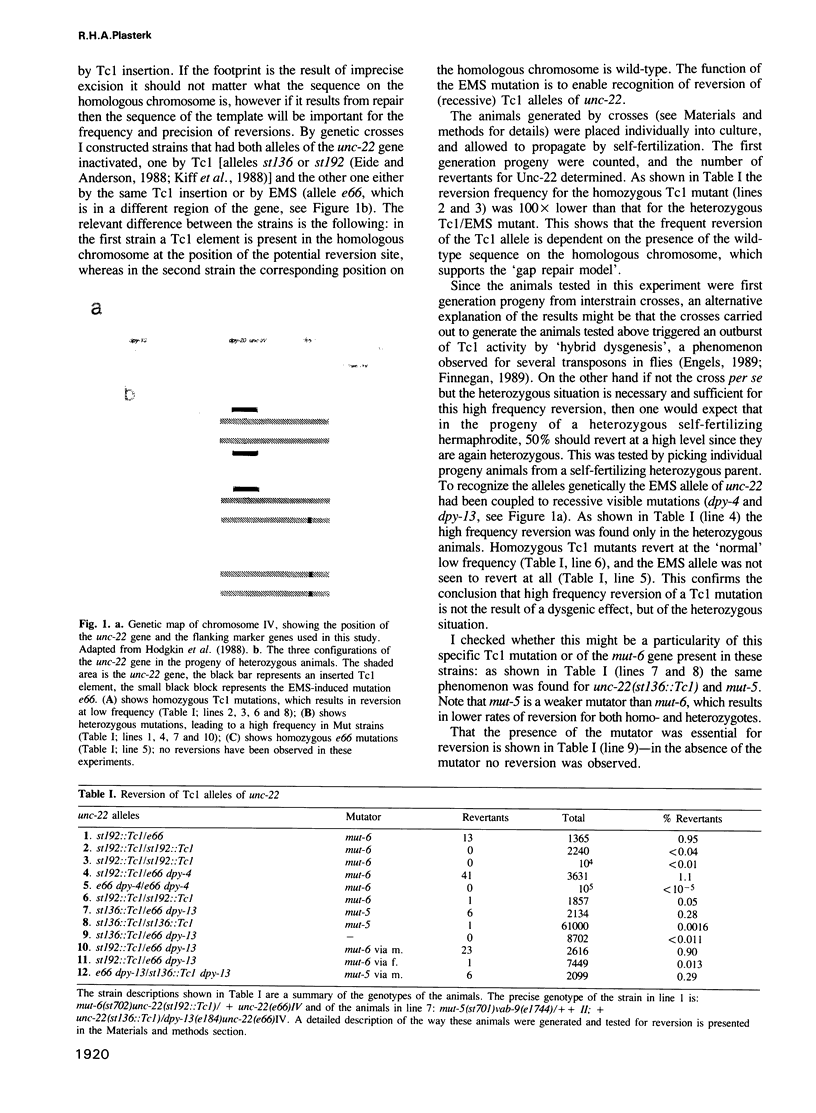
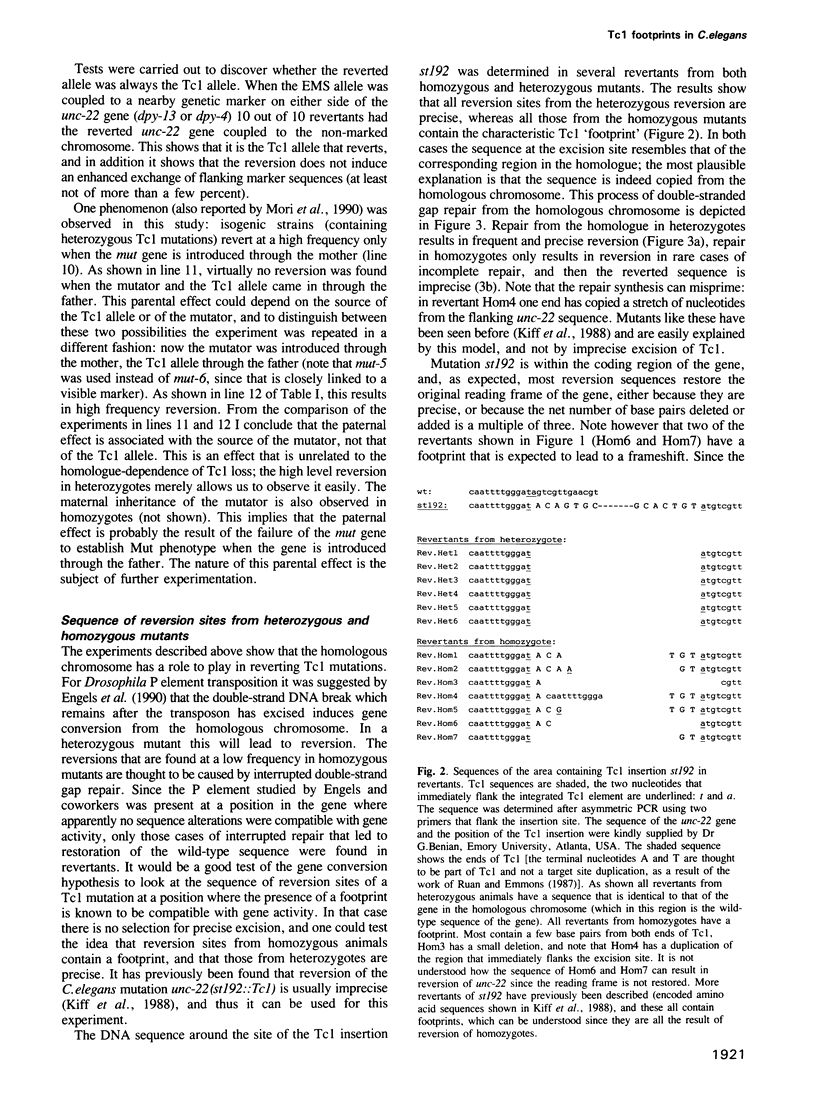
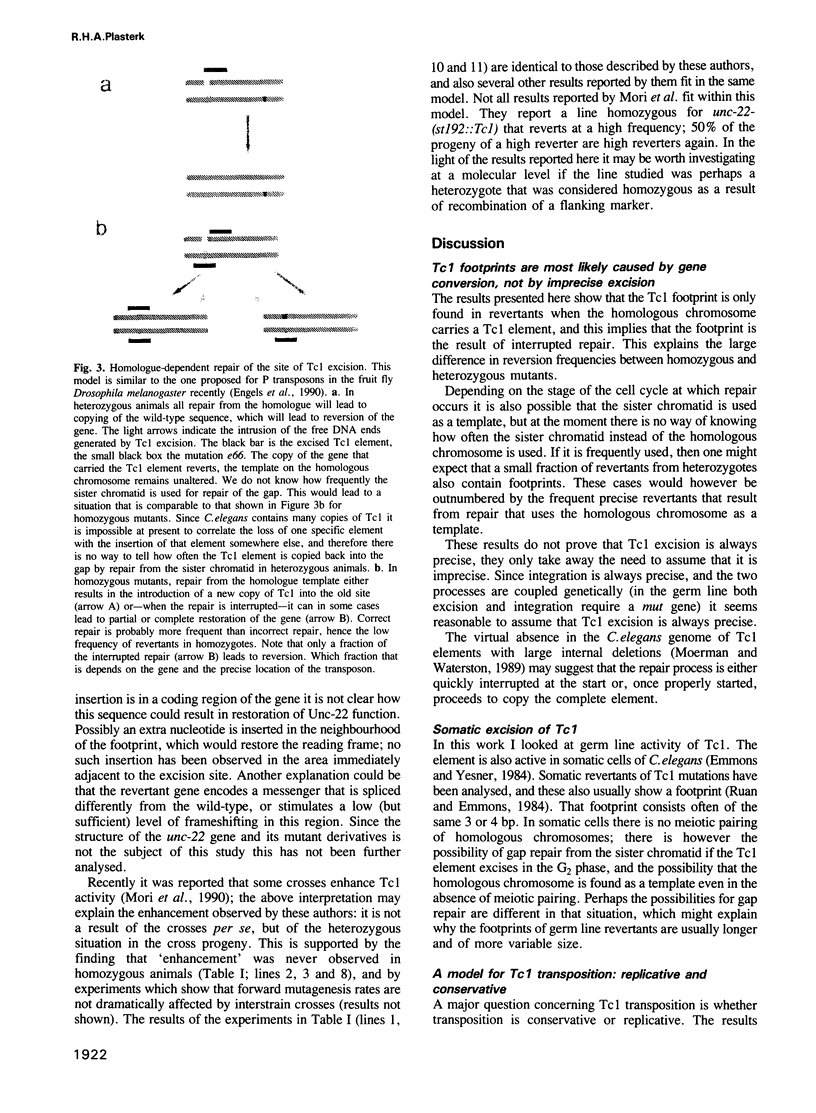
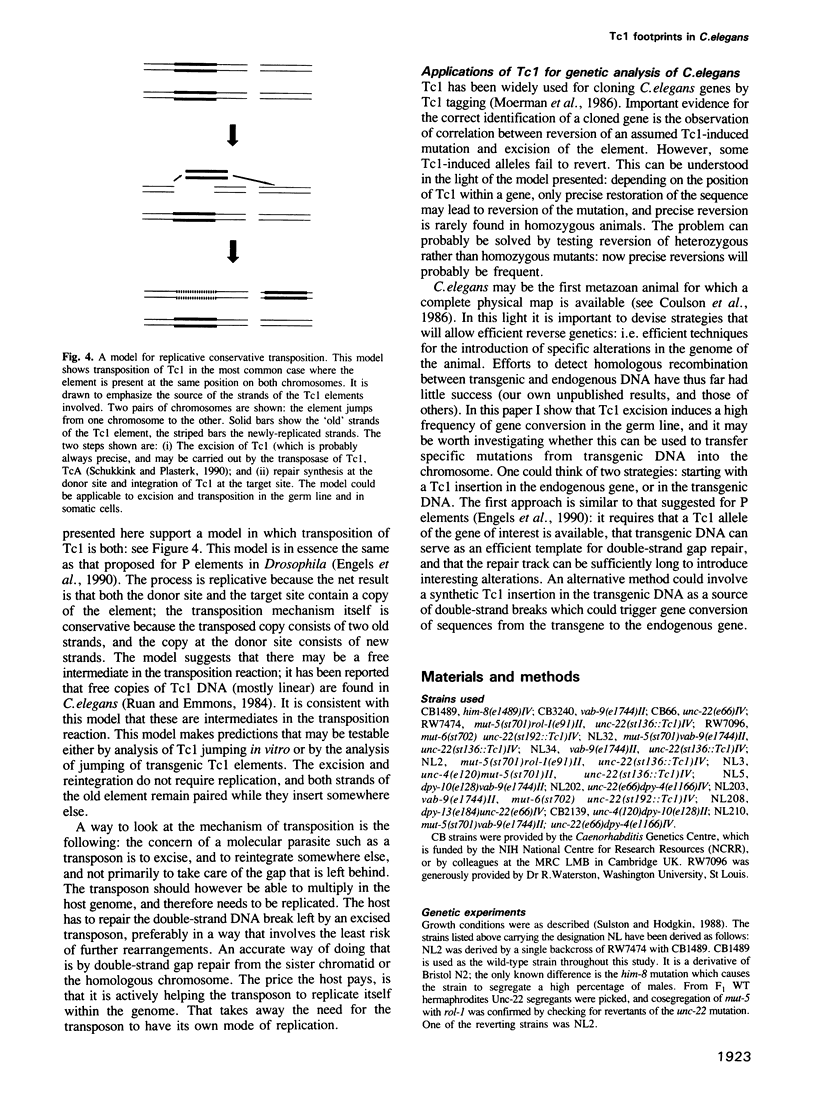
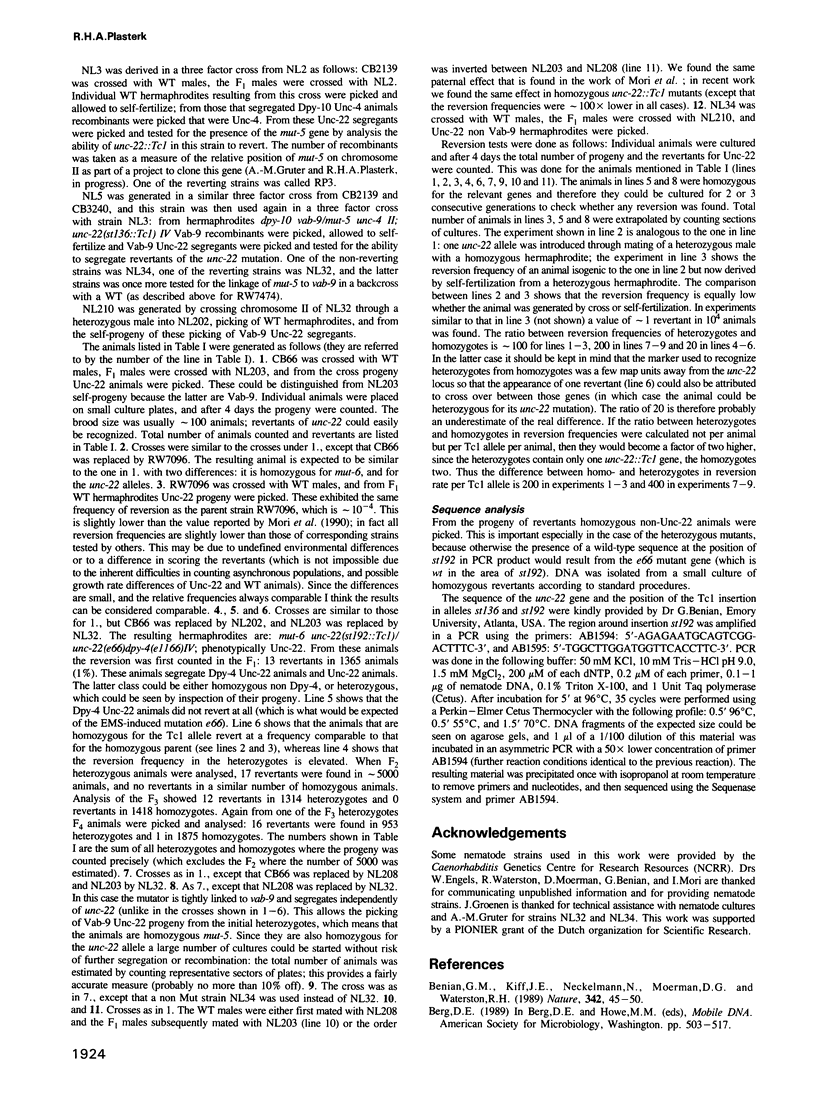
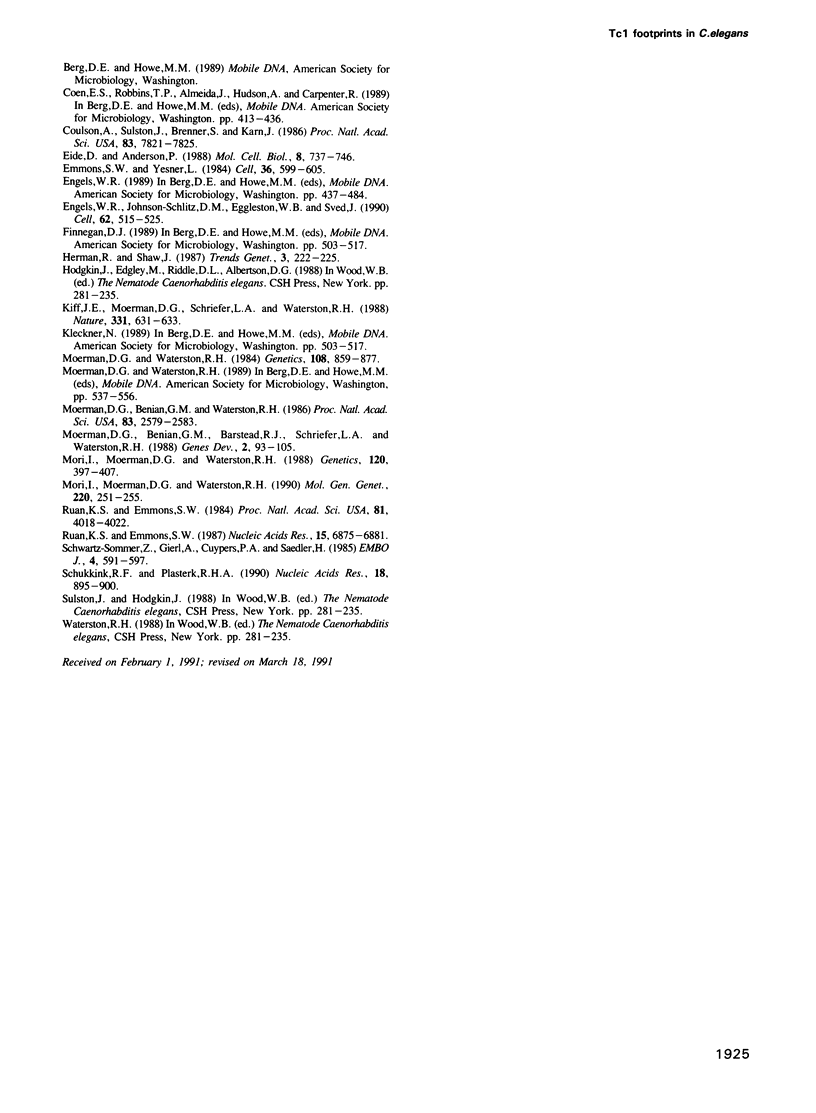
Images in this article
Selected References
These references are in PubMed. This may not be the complete list of references from this article.
- Benian G. M., Kiff J. E., Neckelmann N., Moerman D. G., Waterston R. H. Sequence of an unusually large protein implicated in regulation of myosin activity in C. elegans. Nature. 1989 Nov 2;342(6245):45–50. doi: 10.1038/342045a0. [DOI] [PubMed] [Google Scholar]
- Coulson A., Sulston J., Brenner S., Karn J. Toward a physical map of the genome of the nematode Caenorhabditis elegans. Proc Natl Acad Sci U S A. 1986 Oct;83(20):7821–7825. doi: 10.1073/pnas.83.20.7821. [DOI] [PMC free article] [PubMed] [Google Scholar]
- Eide D., Anderson P. Insertion and excision of Caenorhabditis elegans transposable element Tc1. Mol Cell Biol. 1988 Feb;8(2):737–746. doi: 10.1128/mcb.8.2.737. [DOI] [PMC free article] [PubMed] [Google Scholar]
- Emmons S. W., Yesner L. High-frequency excision of transposable element Tc 1 in the nematode Caenorhabditis elegans is limited to somatic cells. Cell. 1984 Mar;36(3):599–605. doi: 10.1016/0092-8674(84)90339-8. [DOI] [PubMed] [Google Scholar]
- Engels W. R., Johnson-Schlitz D. M., Eggleston W. B., Sved J. High-frequency P element loss in Drosophila is homolog dependent. Cell. 1990 Aug 10;62(3):515–525. doi: 10.1016/0092-8674(90)90016-8. [DOI] [PubMed] [Google Scholar]
- Kiff J. E., Moerman D. G., Schriefer L. A., Waterston R. H. Transposon-induced deletions in unc-22 of C. elegans associated with almost normal gene activity. Nature. 1988 Feb 18;331(6157):631–633. doi: 10.1038/331631a0. [DOI] [PubMed] [Google Scholar]
- Moerman D. G., Benian G. M., Barstead R. J., Schriefer L. A., Waterston R. H. Identification and intracellular localization of the unc-22 gene product of Caenorhabditis elegans. Genes Dev. 1988 Jan;2(1):93–105. doi: 10.1101/gad.2.1.93. [DOI] [PubMed] [Google Scholar]
- Moerman D. G., Benian G. M., Waterston R. H. Molecular cloning of the muscle gene unc-22 in Caenorhabditis elegans by Tc1 transposon tagging. Proc Natl Acad Sci U S A. 1986 Apr;83(8):2579–2583. doi: 10.1073/pnas.83.8.2579. [DOI] [PMC free article] [PubMed] [Google Scholar]
- Moerman D. G., Waterston R. H. Spontaneous unstable unc-22 IV mutations in C. elegans var. Bergerac. Genetics. 1984 Dec;108(4):859–877. doi: 10.1093/genetics/108.4.859. [DOI] [PMC free article] [PubMed] [Google Scholar]
- Mori I., Moerman D. G., Waterston R. H. Analysis of a mutator activity necessary for germline transposition and excision of Tc1 transposable elements in Caenorhabditis elegans. Genetics. 1988 Oct;120(2):397–407. doi: 10.1093/genetics/120.2.397. [DOI] [PMC free article] [PubMed] [Google Scholar]
- Mori I., Moerman D. G., Waterston R. H. Interstrain crosses enhance excision of Tc1 transposable elements in Caenorhabditis elegans. Mol Gen Genet. 1990 Jan;220(2):251–255. doi: 10.1007/BF00260490. [DOI] [PubMed] [Google Scholar]
- Ruan K. S., Emmons S. W. Precise and imprecise somatic excision of the transposon Tc1 in the nematode C. elegans. Nucleic Acids Res. 1987 Sep 11;15(17):6875–6881. doi: 10.1093/nar/15.17.6875. [DOI] [PMC free article] [PubMed] [Google Scholar]
- Ruan K., Emmons S. W. Extrachromosomal copies of transposon Tc1 in the nematode Caenorhabditis elegans. Proc Natl Acad Sci U S A. 1984 Jul;81(13):4018–4022. doi: 10.1073/pnas.81.13.4018. [DOI] [PMC free article] [PubMed] [Google Scholar]
- Schukkink R. F., Plasterk R. H. TcA, the putative transposase of the C. elegans Tc1 transposon, has an N-terminal DNA binding domain. Nucleic Acids Res. 1990 Feb 25;18(4):895–900. doi: 10.1093/nar/18.4.895. [DOI] [PMC free article] [PubMed] [Google Scholar]
- Schwarz-Sommer Z., Gierl A., Cuypers H., Peterson P. A., Saedler H. Plant transposable elements generate the DNA sequence diversity needed in evolution. EMBO J. 1985 Mar;4(3):591–597. doi: 10.1002/j.1460-2075.1985.tb03671.x. [DOI] [PMC free article] [PubMed] [Google Scholar]



